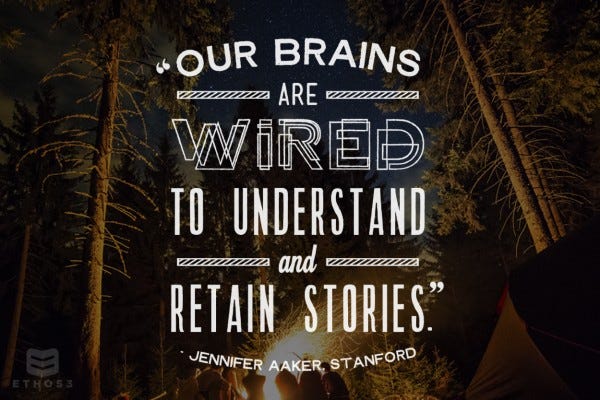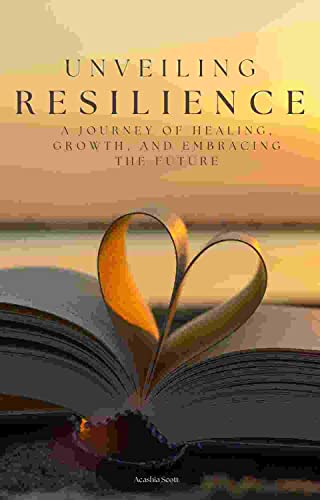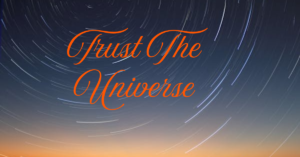Jump To Section
Discover Resilience
Life’s unpredictability is a constant. One moment, the skies are clear; the next, clouds gather. When storms arise, do you seek shelter and wait, or do you dance in the rain? Learning to adapt and grow from these challenges enables us to weather life’s inevitable storms and emerge stronger. Let’s delve into the art and science of cultivating this inner strength, empowering us to face life with courage, adaptability, and grace.
Check This Blog: Unlocking Self-Mastery: 6 Audacious Strategies for Success
Each of us navigates through a maze of trials and tribulations that challenge our resolve and fortitude. Yet, amidst the chaos and uncertainty, there exists a profound and transformative force: storytelling. This ancient art form serves as a beacon of light, guiding us through the darkest of times and connecting us in the shared experience of resilience. As we embark on this voyage of self-discovery, let us unravel the intricate tapestry of resilience and storytelling, discovering how these intertwined forces shape our human experience and infuse hope into the fabric of adversity.

The relationship between storytelling and building resilience involves both psychology and neurobiology. As highlighted in a Harvard Business Review article, storytelling triggers a significant neurological response. Research by neuroeconomist Paul Zak suggests that during intense moments in a story, our brains produce cortisol, the stress hormone, which helps us concentrate.
Conversely, the enjoyable and captivating aspects of a story release oxytocin, a feel-good chemical promoting connection and empathy. Additional neurological studies indicate that a positive resolution to a story activates the limbic system, our brain’s reward center, releasing dopamine. This neurotransmitter fosters feelings of hopefulness and optimism.
Transforming a memory into a story involves a creative process that requires self-reflection, allowing us to examine ourselves and our circumstances from a broader perspective. Resilience, defined by the American Psychological Association as “the process of adapting well in the face of adversity, trauma, tragedy, threats, or significant sources of stress,” grows through this process. Understanding what we faced—our emotions, struggles, losses, and lessons—is one aspect of resilience.
Effectively communicating this to others can transform our sense of self. The language we use to describe an experience shapes our perception of it. “Frame adversity as a challenge, and you become more flexible and able to deal with it, move on, learn from it, and grow,” writes Maria Konnikova in “How People Learn To Become Resilient” in The New Yorker. “Focus on it, frame it as a threat, and a potentially traumatic event becomes an enduring problem; you become more inflexible, and more likely to be negatively affected.”
Consider the story of Viktor Frankl, a Holocaust survivor who found solace and strength in sharing his experiences through his seminal work, “Man’s Search for Meaning.” Through his poignant narrative, Frankl illuminated the resilience of the human spirit, inspiring countless individuals to find purpose and meaning even in the face of unimaginable suffering.
Similarly, the tale of Maya Angelou, a renowned poet and civil rights activist, serves as a testament to the transformative power of storytelling. Despite enduring racism, trauma, and adversity, Angelou’s candid and courageous storytelling empowered generations to confront injustice and embrace their inner strength.
These real-life examples underscore the profound impact of resilience and storytelling in illuminating the human experience and inspiring hope in the face of adversity. As you embark on your own journey of self-discovery, remember the power of your own story. Through sharing your experiences of resilience, you not only find empowerment but also forge connections with others who have walked similar paths. Together, let us embrace the transformative power of storytelling, weaving a tapestry of resilience and hope that transcends the trials of life.
The Power of Resilience
Resilience stands as a beacon of strength amidst the storms of adversity. It is the unwavering resolve to rise above challenges, to adapt, and to thrive in the face of uncertainty. At the heart of resilience lies the philosophy of Srikumar Rao, a renowned educator and author, whose transformative teachings illuminate the path to inner strength and resilience.

Rao’s own journey is a testament to the power of resilience. Born and raised in India, he faced numerous obstacles on his path to success, including the sudden loss of his father and financial hardships. Yet, through unwavering determination and a steadfast commitment to his goals, Rao persevered, ultimately becoming a successful entrepreneur and educator.
Check This Blog: Power of Habits: 6 Habit Hacks To Boost Your Potential with Personal Growth
Central to Rao’s philosophy is the idea that resilience is not simply about bouncing back from setbacks but about embracing challenges as opportunities for growth and learning. It is about cultivating a mindset of resilience that allows us to navigate life’s ups and downs with grace and fortitude.
In today’s fast-paced and unpredictable world, resilience has never been more essential. Whether facing personal setbacks, professional challenges, or global crises, resilience empowers us to face adversity with courage and resilience. It is the inner strength that allows us to persevere in the face of uncertainty, to adapt to change, and to emerge stronger and more resilient than ever before.
Stories — both sharing our perception of experiences and listening to those of others — are at the heart of working this muscle, and not just for kids. Through story, we can come to terms with, and make meaning of what happened and must be faced, and this applies to people of any age. “Science has proven that one of the major ways the brain operates is by taking facts and organizing them into a story. Once created, that story (a person’s perception of reality) then allows that person to sort reality to conform to it. Consequently, the first building block of a person’s resilience is crafting a meaningful story and then supporting it with facts
As you navigate the twists and turns of life, remember the wisdom of Srikumar Rao and the transformative power of resilience. Embrace challenges as opportunities for growth, cultivate a mindset of resilience, and tap into the inner strength that lies within you. Through resilience, you can weather any storm, overcome any obstacle, and emerge victorious in the journey of life.
Unraveling Resilience: Exploring the Science Behind It
Resilience is influenced by personal factors, but science reveals that our ability to bounce back comes from both physiological and psychological mechanisms.
Neurobiology: Within the brain, the hippocampus and prefrontal cortex play crucial roles in managing stress responses. Resilient individuals tend to exhibit controlled reactions to trauma, rather than being overwhelmed by triggers.
Neural pathways: Resilience fosters the strengthening of connections between different brain regions, promoting more adaptive behaviors in the face of adversity. Over time, our brains become wired for resilience.
Hormonal Balance: Resilient individuals often maintain optimal levels of hormones such as cortisol and adrenaline, allowing them to respond appropriately to stressors without feeling overwhelmed.
Genetics: Certain genes, like FKBP5, are associated with both susceptibility and resilience to PTSD, indicating a genetic component. However, experiences and environment play crucial roles.
Psychological Factors: Our thought patterns and constructs such as optimism, self-efficacy, and emotional regulation can enhance resilience regardless of biological factors.
Similar to how regular exercise enhances physical stamina, cultivating psychological and emotional resilience builds the mental strength needed to confront challenges. While genetics contribute partially, human resilience is multi-faceted and significantly influenced by our life experiences.
The Transformative Power of Storytelling

Storytelling is a timeless tradition that has the power to transcend barriers and connect us on a deeply human level. Through the sharing of personal narratives, we find solace in knowing that we are not alone in our struggles and triumphs. Take, for example, the story of Oprah Winfrey, who overcame a tumultuous childhood marked by poverty and abuse to become one of the most influential media moguls in the world. Through her openness and vulnerability, Oprah has inspired millions of people to embrace their own stories and find strength in their struggles.
Storytelling serves as a timeless thread that weaves together the fabric of our lives, connecting us in shared narratives of triumph and resilience. As you embark on your journey of self-discovery, let us delve into the transformative power of storytelling, exploring how it shapes our perception of the world and inspires us to embrace our own unique narratives.
Check This Blog: Unleash Your Inner Resilience: 5 Outstanding Keys To Face Adversity
Consider the story of APJ Abdul Kalam, fondly known as the “Missile Man of India.” Through his humble beginnings in a small village, Kalam rose to become one of India’s most revered scientists and statesmen. His journey, marked by perseverance and determination, serves as a testament to the transformative power of storytelling. By sharing his experiences and insights, Kalam inspired millions to dream big and strive for excellence, regardless of their circumstances.
Similarly, the story of Barack Obama, the 44th President of the United States, is a testament to the transformative power of storytelling. From his early days as a community organizer to his historic presidency, Obama’s journey is a testament to the power of hope, resilience, and perseverance. Through his eloquent storytelling and unwavering optimism, Obama inspired a generation to believe in the possibility of change and to work towards a brighter future for all.
These real-life examples underscore the profound impact of storytelling in shaping our perceptions, inspiring change, and fostering empathy and connection. As you reflect on your own journey, remember the power of your story. Whether through words, art, or action, your story has the power to inspire, uplift, and transform lives. Embrace the transformative power of storytelling, and let your voice be heard in the symphony of human experience.
Finding Empowerment Through Sharing Personal Stories
When we share our personal stories of resilience, we not only reclaim our power but also offer hope and encouragement to others facing similar challenges. Consider the story of Nick Vujicic, born without arms or legs, who defied all odds to become a motivational speaker and advocate for people with disabilities. Through his message of hope and resilience, Nick has touched the lives of millions, proving that adversity is not a barrier to success but a springboard for growth.
Check This Blog: Embracing Discomfort: 5 Wonderful Strategies to Fuel Personal Growth Beyond Your Comfort Zone
Our personal stories serve as the threads that weave together the fabric of our lives. Each experience, triumph, and challenge contribute to the rich narrative of who we are and who we aspire to become. As you navigate the ups and downs of life, consider the profound impact of finding empowerment through sharing your personal stories.
Imagine a young woman who has struggled with mental health challenges for years, feeling isolated and alone in her journey. However, one day, she decides to share her story with a close friend, opening up about her struggles and vulnerabilities. In doing so, she not only finds solace in knowing that she is not alone but also discovers a sense of empowerment in owning her truth and breaking the silence surrounding mental health issues.
Similarly, consider a man who has faced discrimination and prejudice due to his ethnicity. Despite the challenges he has encountered, he decides to share his experiences publicly, using his voice to raise awareness and advocate for change. In sharing his story, he not only finds strength in solidarity with others who have faced similar struggles but also empowers others to speak out against injustice and discrimination.
These real-life examples illustrate the transformative power of sharing personal stories. By embracing vulnerability and authenticity, we not only find empowerment in owning our truth but also create space for empathy, understanding, and connection. As you reflect on your own journey, consider the power of sharing your story. Your experiences, struggles, and triumphs have the potential to inspire, uplift, and empower others who may be facing similar challenges. Embrace the opportunity to share your story, and discover the profound sense of empowerment that comes from connecting with others in the shared human experience.
Conclusion:
As you journey through life’s myriad experiences, you carry with you a unique tapestry of stories – tales of triumph, of struggle, of resilience. Within these narratives lies a transformative power, capable of touching hearts, inspiring minds, and sparking change. Reflecting on the interplay between resilience and storytelling unveils a profound truth: your story has the potential to shape the world.
When you share your own experiences, you invite others into your world, offering glimpses of vulnerability, strength, and growth. Through your openness, you create a space for healing, for growth, and for connection. Likewise, when you lend an ear to the stories of others, you not only bear witness to their struggles but also become a part of their journey towards healing and resilience.
In embracing the transformative power of storytelling, you become a catalyst for change – a beacon of hope in a world often fraught with adversity. Your willingness to share your story, to speak your truth, ignites a spark of inspiration in those who hear it. It serves as a reminder that resilience is not just a solitary endeavor but a collective journey, bound together by the threads of shared experience.
As you dare to share your story, you empower others to do the same. You create a ripple effect of courage, resilience, and hope that reverberates far beyond the confines of your own life. Together, we find strength in our shared humanity, forging bonds that transcend adversity and unite us in our collective journey towards healing and growth.
So, as you reflect on the journey of resilience and storytelling, remember the power that lies within your own story. Dare to share it, knowing that your voice has the capacity to ignite hope, inspire change, and shape the world for the better.
Check This Blog: Unveiling the profound lessons: Remarkable stories of life’s fragility and resilience





Pingback: The Invisible Threads That Bind Us: 4 Ways to Deepen Your Energy Bonds - True Potential Quest
Pingback: Power of Grit and Grind: 10 Strategies for Unstoppable Success - True Potential Quest